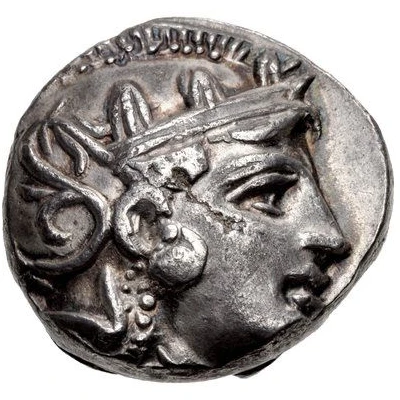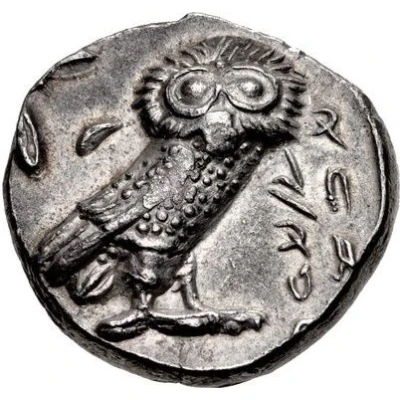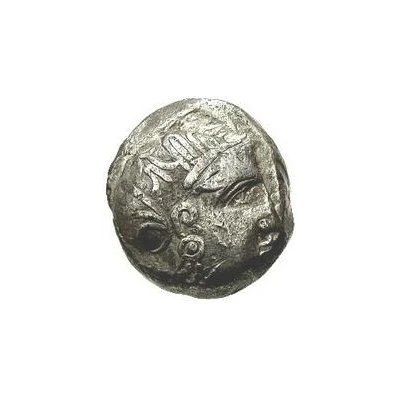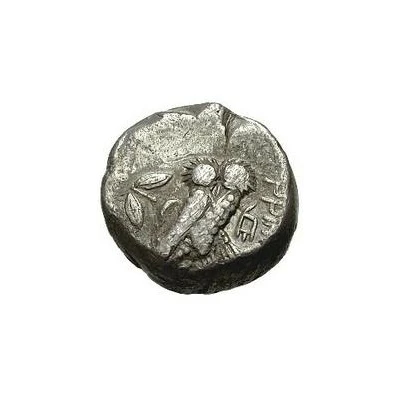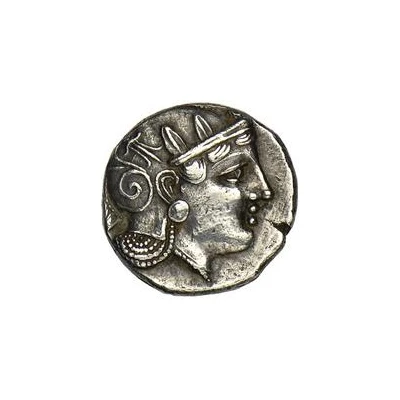
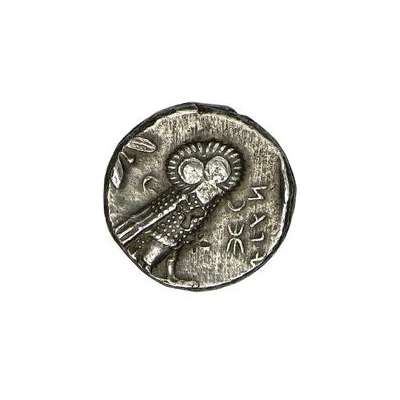

Tetradrachm - Sabaces 343 BC - 337 BC
| Silver | 17.15 g | 24 mm |
| Issuer | Satrapy of Egypt (Achaemenid Satrapies) |
|---|---|
| Satrap | Sabaces (343 BC - 333 BC) |
| Type | Standard circulation coin |
| Years | 343 BC - 337 BC |
| Value | Tetradrachm (4) |
| Currency | Drachm (550-330 BCE) |
| Composition | Silver |
| Weight | 17.15 g |
| Diameter | 24 mm |
| Shape | Round (irregular) |
| Technique | Hammered |
| Orientation | Variable alignment ↺ |
| Demonetized | Yes |
| Updated | 2024-10-10 |
| Numista | N#80670 |
|---|---|
| Rarity index | 95% |
Reverse
Owl standing right, head facing; olive spray and crescent to left, "Sabakes symbol" and SWYK (in Aramaic) to right.
Script: Aramaic
Comment
Van Alfen Type I, 13; Nicolet-Pierre, Monnaies 11.
After years of independence from Persia, Egypt was finally recovered in 343 by the Persian king Artaxerxes III. In the last decade of Persian rule, various local satraps took it upon themselves, as the need arose, primarily to pay for mercenary Greek soldiers, to strike Tetradrachms with Athenian types, but bearing their own names in Aramaic script. Such issues are known for Sabakes, the satrap of Egypt. In 333 B.C. Sabakes led a contingent from Egypt to join the Persian army facing Alexander. He died at Issos.
Interesting fact
One interesting fact about the Tetradrachm - Sabaces coin is that it features an image of the Persian king, Artaxerxes III, on one side, and an image of the Egyptian goddess, Isis, on the other. This coin was issued during the reign of Sabaces, who was the satrap (governor) of Egypt under the Achaemenid Empire. The fact that it features both Persian and Egyptian imagery highlights the cultural exchange and blending that occurred during this period of history.
